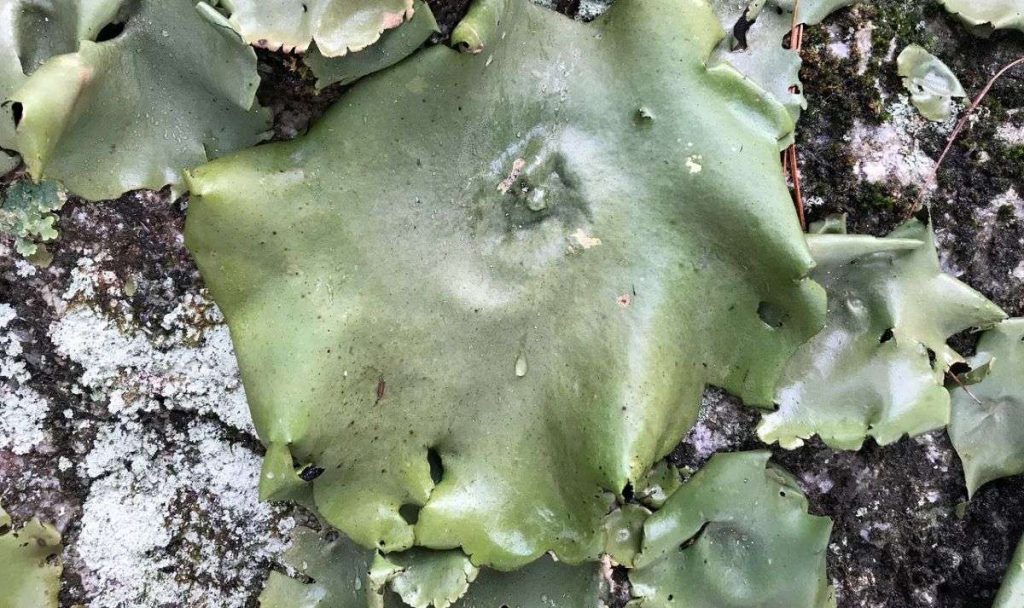Out in the Woods
- February 17th 2024
- Out in the Woods
Rock Tripe on Vigue Trail near Deering Pond
Photos: Kevin McKeon
Lettuce-like Rock Tripe is Edible, Barely
By Kevin McKeon, director, Mousam Way Land Trust
The trails around Deering Pond hold many interesting plants. One, seen covering many large, old rocks and outcrops of granite, is a type of lichen called rock tripe. Part of its botanical name comes from the Latin umbilicus, meaning navel. This is where another common name, navel lichen, comes from and describes how these lichens attach themselves to stone with a single attachment point that looks like a belly button.
There are about 65 species of rock tripe, and they grow all over the world. As lichens, they are composed of algae and a fungus living together in a type of symbiosis. The fungus part (a mushroom is a fungus) gives the lichen its body, and the alga part allows lichen to make food via photosynthesis. It’s like a mushroom that learned how to make food from the sun. As humans have captured, domesticated, and grown cattle for food, giving them a temporary home, so do the fungi capture algae, giving them a home while the algae make food for the fungi. The puckered area in the center of the rock tripe lichen that looks like an X shows its attachment point.

Rock tripe attachment point
These lichens can grow as big as lettuce leaves and can live without water for over a year. Some Native Americans, most notably the Cree, ate them as a starvation food, also teaching early settlers how to prepare and eat them to survive. Those who have eaten it mostly agree that rock tripe is very bitter, requiring several soakings and washes, and that it is indeed a starvation food that you’ve got to be pretty desperate to eat. Since it’s also called leather lichen, it also gives one’s jaw muscles quite a workout. George Washington’s starving men ate it at Valley Forge in the winter of 1777. They lived, but didn’t thrive, because the lichen can act as a strong laxative. Most edible fungi have significant amounts of protein and all eight essential amino acids, but the human digestive system doesn’t seem to be very fond of rock lichen, and a lot of it needs to be eaten to gain nutritional value. So, it’s best to enjoy it by observation, knowing that you don’t NEED to eat it!






